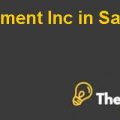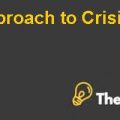Cengage Learning: Can Apax Partners Salvage This Buyout? Case Study Help
Introduction
Apax Partners faced a challenging situation in November 2012 regarding its leveraged buyout (LBO) of the educational materials and college books provider Cengage Learning which filed for bankruptcy. Apax Partners bought Cengage in May 2007 for 7.1 billion in the frothy buyout market. The deal was financed with the buyout of $5.6 billion in debt. Apax had also invested $1.8 billion in Cengage. The adverse effects of the global crisis in the year 2007-8 had the profits of Cengage started to fall rapidly.
In the wake of the crisis, the libraries concentrated the budget on education and students started to buy the used course book. In addition, increased digitalized learning materials had made substantial expenditures for new content and delivery networks a necessity. As the financial position of the company is declining Apax is concerned about whether the company had the potential to avoid bankruptcy and whether it should provide provisions to its debt or not. The study will analyze the concerns of the PE firm to invest in the debt of the concerned leverage buyout (LBO).
Problem Statement
The Apax partners are concerned with the rapidly declining profits of Cengage (Apax frothy buyout) which is filed for bankruptcy. Apax is considering investing in the debt of its leveraged buyout. The two considered strategies to finance the debt are senior debt and junior debt investment. The decision to purchase the debt would moreover help leverage its status or even bring it towards a bigger loss of reputation.
Situational Analysis
Increasing Purchase of Debt in Distressed LBOs
A transaction in which a company is acquired by using debt as the main source of financing is termed a leveraged buyout (LBO). These types of transaction generally occur when a private equity (PE) firm take debt as much as it can from a variety of lenders taking up to 70 to 80 percent of the acquisition price and then balance the funds with its equity.
PE firms use so much of the LBO as it boosts the expected returns to the PE firms. The PE firms are expected to achieve a larger internal rate of returns (IRR) and returns on equity (ROE) by investing as little of their equity as possible, assuming the plan goes horizontally. Since the PE firms are rewarded based on their financial returns, the practice of leverage in the LBOs is vital to achieving its targeted IRRs which can typically be 20-30 percent higher.
Though leverage can increase equity returns it has the drawback of increased risks. By building numerous shares of debt onto an operating company, PE is considerably increasing the risk of the transaction. If the company’s cash flow is fitted the company may not be able to service the debt and eventually will have to restructure and could experience a downturn most probable to distributing all the returns to the equity sponsors.
Pros and Cons of Debt Investment Strategy
The company can decide between buying the debt of Cengage have to be made after analyzing the paybacks and drawbacks of purchasing a debt of Cengage. The pros and cons of buying Cengage’s debt are discussed below.
Pros
The company is considering buying the ample amount of Cengage’s debt due to many possible benefits as the company has the potential to achieve gains by the purchase of Cengage’s debt.
For instance, if the company purchases a substantial volume of debt the company would have the increased possibility to retain the ownership of Cengage after the debt of equity shift. Moreover, the company would get the upper hand to reserve its place as a creditor at the table of negotiation and would be able to influence the development of the reformation of the bankruptcy. Furthermore, if Hansen’s plan would be successful the company would be able to enjoy the potential returns on its investments.
Cons
The concerned investment strategy has some potential drawbacks Cengage’s restructuring would cause a significant reduction of the company’s stake equity and hence the debt-holders would demand equity in exchange for a substantial decline in the principle of the debt. Additionally, investors would doubt investing in a company that has filed for bankruptcy and has an insignificant position in the market.
Furthermore, the company’s creditors would suspicious of Apax’s bargaining incentive as an equity holder because there is the possibility of conflict with the objectives of Apax being a creditor. Moreover being a company’s shareholder it does not sound sensible to purchase the debt of a company that is losing its market position................
Cengage Learning Can Apax Partners Salvage This Buyout Case Study Help
case solution. Please place the order on the website to order your own originally done case solution."}" data-sheets-userformat="{"2":4481,"3":{"1":0},"10":2,"11":0,"15":"arial,sans,sans-serif"}">This is just a sample partial case solution. Please place the order on the website to order your own originally done case solution.













